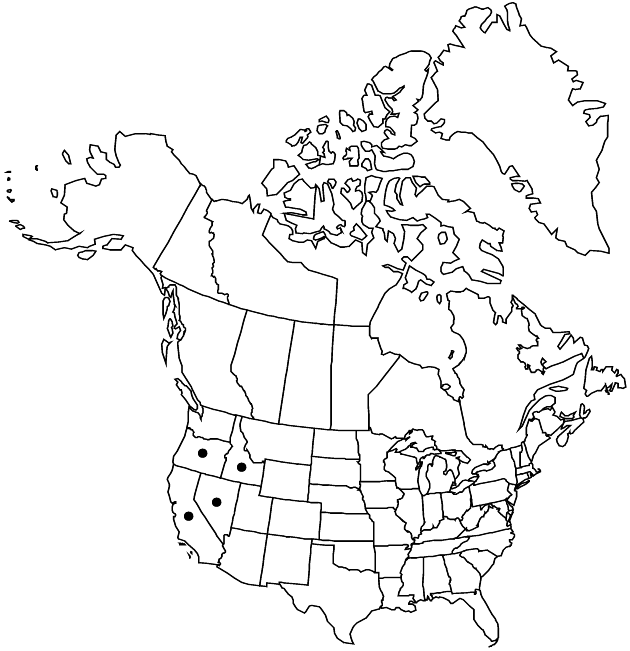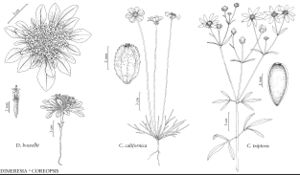Difference between revisions of "Dimeresia howellii"
in A. Gray et al., Syn. Fl. N. Amer. ed. 2, 1(2): 449. 1886.
Treatment appears in FNA Volume 21. Treatment on page 183.
FNA>Volume Importer |
FNA>Volume Importer |
||
| Line 46: | Line 46: | ||
|publication year=1886 | |publication year=1886 | ||
|special status= | |special status= | ||
| − | |source xml=https://jpend@bitbucket.org/aafc-mbb/fna-data-curation.git/src/ | + | |source xml=https://jpend@bitbucket.org/aafc-mbb/fna-data-curation.git/src/8f726806613d60c220dc4493de13607dd3150896/coarse_grained_fna_xml/V19-20-21/V21_449.xml |
|tribe=Asteraceae tribe Heliantheae | |tribe=Asteraceae tribe Heliantheae | ||
|subtribe=Asteraceae (tribe Heliantheae) subtribe Dimeresiinae | |subtribe=Asteraceae (tribe Heliantheae) subtribe Dimeresiinae | ||
Revision as of 16:34, 18 September 2019
Leaf blades (2–)10–30+ mm, initially cobwebby, glabrescent, often gland-dotted. Corollas 5–6 mm. Cypselae 2–3 mm; pappi 3–4 mm (bristles falling together). 2n = 14.
Phenology: Flowering spring–summer.
Habitat: Open gravelly or sandy places, talus slopes screes, serpentine
Elevation: 1100–2900 m
Distribution

Calif., Idaho, Nev., Oreg.
Discussion
Selected References
None.
Lower Taxa
None.
